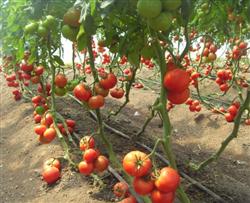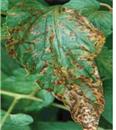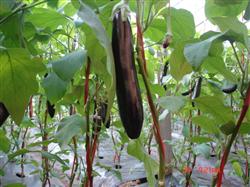Tomato fertilizer-saving and water-saving technology in warm winter greenhouse

Fertilizer saving: considering the cost saving, input reduction and fertilization efficiency, 10000 kg of chicken manure, 50 kg of urea and 50 kg of ternary compound fertilizer are applied per mu, which is the best amount of fertilizer for fruits and vegetables in winter warm greenhouse in Shandong coastal area. Water saving: drip irrigation is adopted, and the soil relative water content is 80%, which can also save water by 70.4% compared with conventional furrow irrigation, which is of great significance for the development of vegetable facilities in saline-alkali areas where agricultural water is extremely scarce. Main technical specification: ① introduces excellent varieties. Israel 144, a mid-late maturing tomato variety with low temperature tolerance, weak light tolerance, disease resistance, high yield and good quality, was selected. ② seedling and colonization. The tomato seeds were soaked in 55 ℃ water for 10 minutes, then dropped slowly to 25 ℃ ~ 30 ℃, and then soaked for 5 hours. Remove and drain the water and prepare to sow and raise seedlings. When the seedlings had 5 or 6 leaves, the planting density was 2000 plants per mu. ③ water and fertilizer management. Using drip irrigation, when the relative water content of the soil is less than 80%, watering to 100% of the relative water content. The result period is generally topdressing once every 20 days, and the amount of topdressing can be controlled at 5kg of urea and 5kg of compound fertilizer per mu. ④ temperature management. After entering the fruiting period, do not make the minimum temperature in the shed lower than 8 ℃. It can be properly ventilated if it exceeds 30 ℃ during the day. ⑤ plant adjustment. Single stalk pruning is used to remove lateral branches at any time to ensure ventilation and light transmission in the field. It can be topped after 5 ears, and a strong lateral branch can be left under the upper ear instead of the original main branch, and 4 or 5 ears can be left at the top. ⑥ protects flowers and fruits. Spray flowers with appropriate concentration of tomato spirit to ensure fruit setting rate and cooperate with artificial pollination.
- Prev

Chemical Control of Tomato spot Blight
★ symptoms: tomato spot blight, also known as white star disease. Tomato can occur at all growth stages, infecting leaves, petioles, stems, calyx and fruits. The leaves are infected with water-stained small round spots on the back of the leaves, followed by dark brown edges on both sides of the leaves, gray-white round or near-round slightly sunken spots in the center.
- Next

How to do well the basic fertilizer work of eggplant
Sclerotinia sclerotiorum is an important disease on eggplant in greenhouse in early spring in coastal areas in recent years, which occurs from seedling stage to adult stage, especially in the early stage of flowering and fruiting, which often causes rot and shedding of buds and young fruits of door eggplant, pair eggplant, main stem and branches, and a sharp decrease in early yield. The symptom of the disease begins at the base of the stem at the seedling stage.
Related
- Where is it suitable to grow horseradish in China? it is expected to see the middle altitude horseradish in Alishan.
- How to prevent tomato virus disease reasonably? (Control methods included)
- Many people like to plant towel gourd on the balcony. What are the main points of this method and management?
- What crops can chili peppers be mixed with?
- Fertilization techniques and matters needing attention in Tomato
- What are the grafting techniques for peach seedlings in spring?
- Harm and control methods of root swelling disease of Chinese cabbage
- What are the pests of sweet potatoes? How to prevent and cure it?
- Symptoms, causes and Control methods of navel Rot in Tomato
- The cause of "Cucumber rotten bibcock" in Farmers' planting Cucumber and its Control Plan

